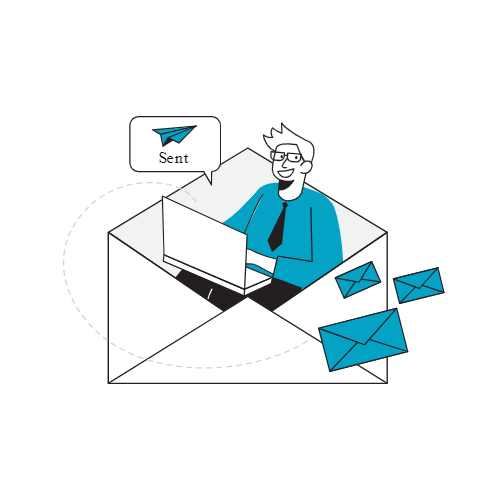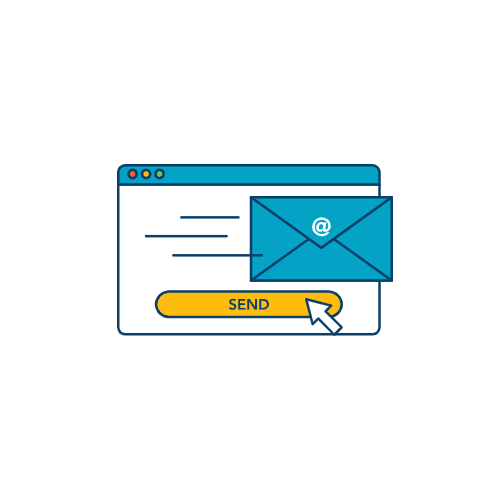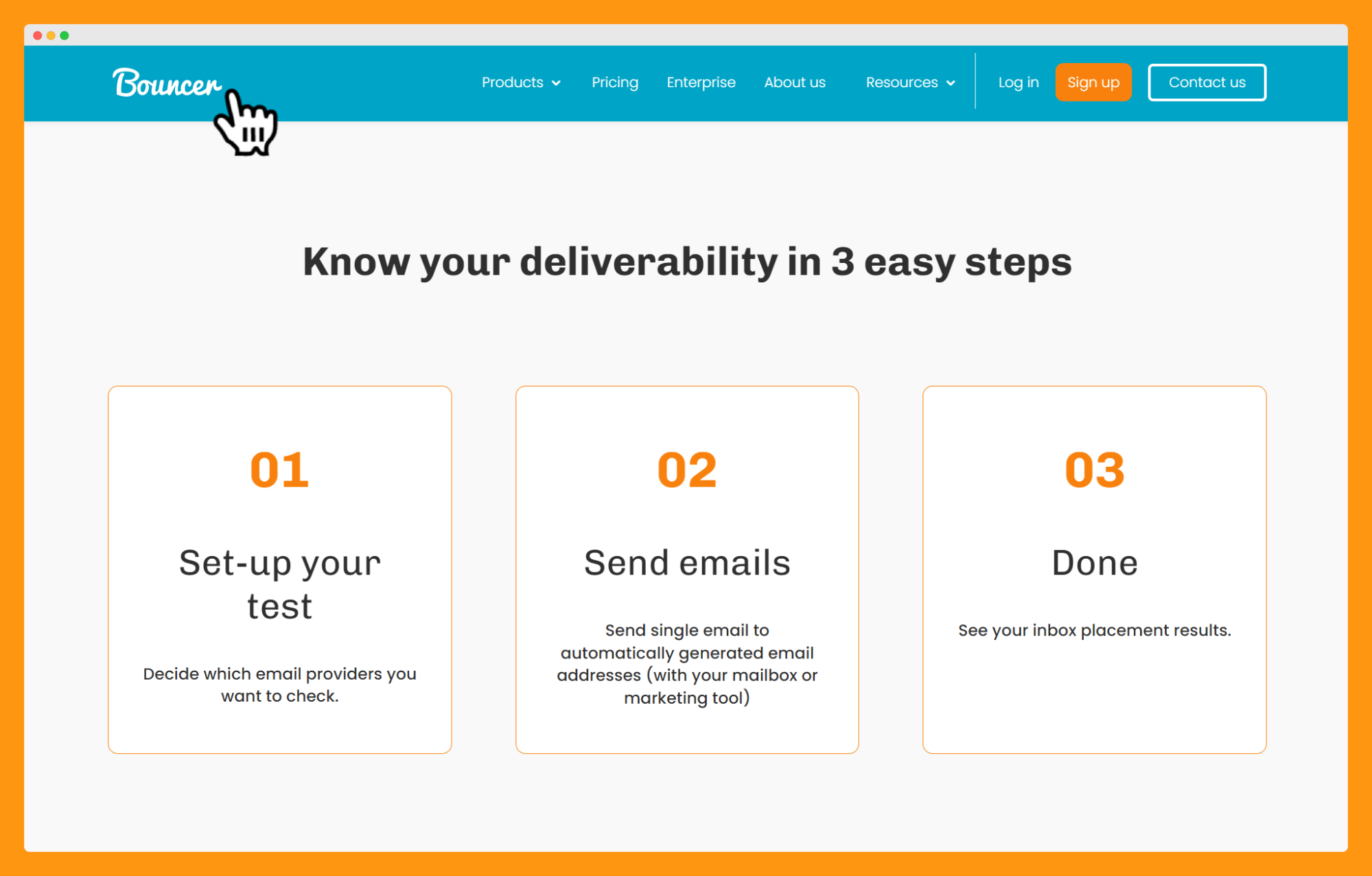Have you ever sent an email and got an error message in return? Chances are that you’ve experienced an email bounce. But did you know there are two types of email bounces – soft bounce vs hard bounce email?
If you want to keep your email marketing metrics on point and get better results from your campaigns, you should try to avoid both types of bounces.
Before breaking down the key five differences between those two, let’s start with the basics.
What is a bounced email?
A bounced email is when you send an email to someone, but it gets returned to you because it couldn’t be delivered.
And there’s one more thing to remember – we divide bounced messages into soft email bounces and hard email bounces.
Hard bounces should be avoided at all costs, while soft bounces are not that bad – but should still be avoided.

Hard and soft bounces explained
Let’s find the key similarities and differences between the two terms.
Hard bounces
#1 What are hard bounces?
Hard bounces are emails that get sent back to you because the recipient’s address is invalid or doesn’t exist. When you get these, it means that there’s a permanent reason why you could not deliver your emails.
#2 Why do hard bounces happen?
Hard bounces happen because of so many common reasons:
- someone has changed their email address
- the email address is fake
- there are strict security spam filters in place with the recipient’s address
- the response wasn’t specific enough to categorize it
- The recipient’s internet service provider rejects the message
#3 How can hard bounces be prevented?
Keep your email list up to date and verify email addresses before sending. The easiest way to do this is to occasionally use Bouncer to verify your email addresses and remove outdated and invalid ones before launching email marketing campaigns.

Soft bounces
#1 What are soft bounces?
Soft bounces are the type of bounce that happens when your email makes it to the recipient’s server, but something stops it from being delivered to their inbox. It is because there’s a temporary error with delivering the email.
#2 Why do soft bounces happen?
Hard bounces happen because:
- the recipient’s mailbox is full
- the mailbox is not configured correctly or inactive
- the recipient’s email service is broken or offline
- the email content does not meet the recipient server’s policies
- the domain name does not exist
#3 How can soft bounces be prevented?
Keep your email in line with email best practices, like avoiding spammy words and excessive links. Don’t go overboard with attachments because they slow things down, for both soft bounce vs hard bounce email.
5 Key differences between a hard bounce and soft bounce
Both of the email types are those that you get back. However, they’re quite different.
01 Definition
A soft bounce is a temporary delivery issue, whereas a hard bounce is a permanent delivery failure.
02 Cause
A soft bounce happens when an email hits the recipient’s email server but bounces back before reaching their inbox. It often happens because of a temporary technical issue, such as a full inbox or a short-term server issue.
A hard bounce is when an email is returned to the sender because the recipient can’t receive it due to, for instance, an invalid email address or a non-existent domain.
03 Timing
A soft bounce message may pop up at any time, even after a message got delivered to the recipient in the past. A hard bounce, on the other hand, usually happens on the first attempt to send an email to the recipient.
04 Impact
The sender reputation isn’t affected by a soft bounce as much as a hard bounce. However, don’t forget that any high email bounce rate can hurt your reputation and deliverability rate, making it harder to send future emails.
Nobody wants their great content bounced, right? A reliable tool for email verification is the solution.
05 Handling
The email server usually resends soft bounces. On the other hand, hard bounces sometimes involve manual handling, such as removing an invalid email address from the mailing list.
If you don’t remove these addresses, you’ll keep sending emails into the abyss. And that can damage your sender’s reputation and make it harder to reach your intended audience in the future.
But it doesn’t have to be the case. Use Bouncer to remove invalid email addresses in a few simple steps and keep your email list hygiene pristine.

Here is an overview of soft bounce vs hard bounce email:
| Hard bounces | Email soft bounces |
| are due to a permanent delivery failure | are due to a temporary delivery failure |
| an email returns to the sender because it can’t be delivered to the recipient’s email address | an email reaches the recipient’s email server but bounces back before reaching their inbox |
| usually happen on the first attempt to send an email | can occur at any time |
| can damage the sender’s reputation | has less of an impact on email deliverability and sender reputation |
| need manual handling, such as removing the invalid email address from the mailing list (but can be automated as well) | are often automatically retried by a mail server |
Tips for improving your bounce rates
High bounce rates may affect your email marketing performance. It’s like a party with a lot of no-shows.
When your emails don’t reach their intended recipients, email service providers see you as a spammy sender. As a result, they may prevent your future incoming emails from reaching the desired inboxes.
No idea when your email bounce rate is OK? Check what the average email bounce is.

#1 Use an email validation platform
Why not get a little help? Let’s bring email bounce rates down with Bouncer! Use it to get your mailing updated. Tools like this help you check the validity of email addresses before you send your amazing emails.
Bouncer can flag invalid, fake, or disposable email addresses and prevent them from being added to your email list, which may also positively impact your ROI.
#2 Keep your email list up-to-date
Get rid of invalid or inactive email addresses regularly. You’ll avoid hard bounces and improve your sender reputation and engagement rates this way.
And speaking of engagement, when your subscribers aren’t engaged, they’re more likely to mark your emails as spam, which can hurt your email deliverability. Definitely, not fun. So, remove unengaged subscribers and ensure your emails reach those truly interested in what you have to say.
On top of that, you may use Bouncer to test the quality of your email list. And the good news is – it’s completely free of charge.
#3 Use a recognizable sender name
When your subscribers see a sender name they recognize, they’re more likely to open your email and engage with your content. Opening an email from an unknown sender may bring some risks.
Simply put, keep your sender name consistent across different emails, especially for a cold email campaign.
#4 Avoid spammy language
If you want to ensure your emails are landing in your subscribers’ inboxes instead of their spam folders, it’s time to watch your language. Don’t use phrases like “make money fast,” “free offer,” or other spammy language that could put you on email blacklists.
Words like these cause email bounces. It is because they trigger spam filters designed to protect email users from malicious email messages.
Are you an email provider? Check out a short list of spam words:
🔴 buy now 🟢 order today
🔴 guaranteed 🟢 you’ll love it
🔴 click here 🟢 learn more here
Also, extensive usage of a dollar sign might be flagged as spam.
Use creative and engaging language and catch everyone’s eyes without being too flashy.
#5 Don’t overload your email with images or attachments
Slow down with images and attachments. They may cause slow loading times, leading to a bounce. How? When you send an email that’s too heavy on the visuals, it can take longer to load and even get flagged as spam.
So think twice, and add only the key images or vector graphics you need to get your point across.
#6 Use a clear and compelling subject line
Whether you write an introduction email or a newsletter to your subscribers, come up with an attention-grabbing subject line. Make sure it accurately represents the content of your email and makes the recipient want to read more.
#7 Include a clear call-to-action
Make it easy for your recipients to take the next step by including CTAs that convert.
And it really works! Whether you want them to sign up for a newsletter, buy a product, or simply reply to your message, a strong call-to-action can help guide them along the way.
#8 Test your emails
Verify that your email is getting delivered to the right inboxes. There’re some old-fashioned ways, like sending the email to your own email address first before blasting it out to a list.
But why do that when you can take advantage of an excellent deliverability tool?

It’s like trying on a pair of jeans before you buy them – you want to check they fit just right! Next time you’re getting ready to send out an email, take a minute to test it out first. Your bounce rate will thank you for it!
#9 Monitor your bounce rates
If you’re not monitoring your bounce rates, you miss out on a crucial piece of the puzzle for improving them. Regularly check your bounce rates to see how you’re doing because only then you’ll be able to adjust your strategy accordingly.
Check your bounce rates and analyze the data regularly. With a little bit of effort and attention, you may turn bounces into conversions.
#10 Build engagement
There’s no way that dry and boring emails attract people. Create engaging content that resonates with your audience so they look forward to hearing from you!
Minimize bounces and maximize conversions
The mystery of soft bounce vs hard bounce is finally resolved. But how do you know if your emails are reaching your audience?
Keep an eagle eye on your mailing lists with Bouncer. Sign up for free to keep your emails flying into inboxes where they belong!
Soft bounce vs hard bounce email: FAQ
What exactly is a soft email bounce?
A soft email bounce occurs when the recipient’s mailbox is full, the message is too large, or the server is temporarily unavailable. In this case, the email service provider will try to deliver the message again later.
What is the difference between a soft bounce and a hard bounce?
A hard email bounce occurs when the recipient’s mail server permanently rejects the email. This happens if the email address is invalid or the recipient’s email account has been closed. Unlike a soft bounce, the email service provider won’t try to send the message again once the recipient’s inbox is full.
How do email bounces affect my email campaigns?
Email bounces may negatively impact your email campaigns. High rates may reduce the deliverability and potentially damage your sender’s reputation with internet service providers. That’s why it’s key to regularly monitor your bounce rates and take steps to improve them.
How do I prevent email bounces in my campaigns?
Prevent email bounces in your campaigns by removing invalid or inactive email addresses. On top of that, avoid using spam trigger words, write a clear call-to-action, and use an email validation platform ( Bouncer is excellent) to verify the email addresses on your list before sending out campaigns.



